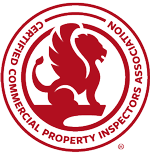About this video:
The ComSOP inspection requirements for panelboards include:
- Report on any unused circuit-breaker panel openings that are not filled.
- Report on absent or poor labeling.
- Inspect panelboards and overcurrent devices, and report on any noted physical damage, overheating, corrosion, or lack of accessibility or working space that would hamper safe operation, maintenance or inspection.
The ComSOP does not require inspectors to remove panelboard cabinet covers or dead fronts if they are not readily accessible or insert any tool, probe or device into the main panelboard, sub-panels, distribution panelboards, or electrical fixtures.
In residential settings, inspectors commonly remove the dead front cover as part of their inspection process to examine the conductors and other components behind it. However, in commercial settings, this practice can be hazardous. Besides voltage and power safety concerns, handling these covers can be challenging due to their weight and separate cabinet cover and dead front cover pieces.
Before inspecting any panelboard, the inspector should assess the working space and verify whether the panel is energized using a non-contact voltage meter. If the panel is deemed safe for inspection, the inspector should document the label plate for inventory purposes and assess its visible condition. Common defects include the absence of filler plates, knockouts, and proper labeling.
Unlike the panelboard featured in this video, many panelboards will have a main breaker. Inspectors should check that the main breaker matches the panel. The amperage and voltage indicated on the panelboard label should correspond to the amperage and voltage on the main breaker.
Additional Resources for Commercial Property Inspections:


